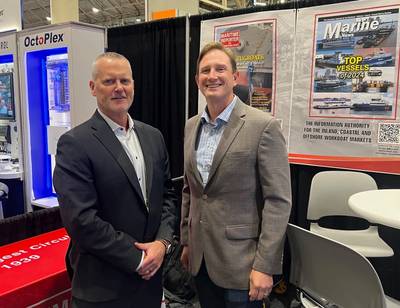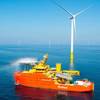OMSA’s Smith: Defending US-Flag Vessels is about Economic, National Security
Anyone who knows Aaron Smith, president and CEO of OMSA, knows that he is passionately focused on the U.S. maritime industry and staunchly defending the U.S. Jones Act fleet and mariners. We caught with Smith on the sidelines of the Workboat Show in New Orleans last week. Highlights of the conversation are below – including an update on the American Offshore Worker Fairness Act – the full interview can be seen on Maritime Reporter TV.
- Let’s talk a bit about the offshore energy industry today. What is the focus of OMSA?
Aaron Smith: Right now is an exciting time for the offshore industry and for OMSA. One of the things we're really working on is called the American Offshore Worker Fairness Act, legislation says is that says, "When a foreign flag vessel works in the US sovereign waters, that vessel has to participate and work by the same rules that apply to US-flag vessels." When our vessels work, they legally have to have the crew match the flag of the vessel. Our vessels are US flagged. That means they're US-built, US-crewed, US-owned.
If a foreign vessel is operating in our sovereign waters, why should they not participate by the same rules? Why should they not have people that are American citizens on board or have citizens that match the flag of their vessel? So if you have a Norwegian flag vesselit should have Norwegian citizens or American citizens. That's fair. That's equal. That is a market where we can compete. But what we see far too often is the exact opposite. We've been tracking foreign flag vessels, and since 2016 we have seen 84 foreign flagged vessels work in the US offshore wind market. They have worked for a combined total of 16,648 days and have supplied a total of 4,750 jobs to foreigners.
Why do those vessels work? There are plenty of US mariners and vessels that can do this work, but [it comes down to] one factor. Crew costs. Crew costs can be anywhere between 40% to 65% of the vessel operator's OPEX [but if you have some vessels with] people making $30 a day, we can't compete.
- Can you give guidance on the economic impact? What has been lost from US mariners and US maritime companies with the scenario that you just laid out?
Aaron Smith: What we have found is that if you take a standard vessel crew rate and you apply a foreign crew cost and a US crew cost, it's about $9,500 a day for a standard US crew, it's about $4,000 for a foreign vessel. So you think every one of those 4,750 mariners that had worked on those foreign vessels, that could be a [US mariner] job. ABs are making north of $300 a day; engineers are making up to $875; captains are sometimes crossing into four digits on day rate. [Those mariners could also be working in the Ready Reserve Force, which takes it from an economic issues to a national security issue].
Watch the full interview with OMSA’s Aaron Smith on Maritime Reporter TV:















